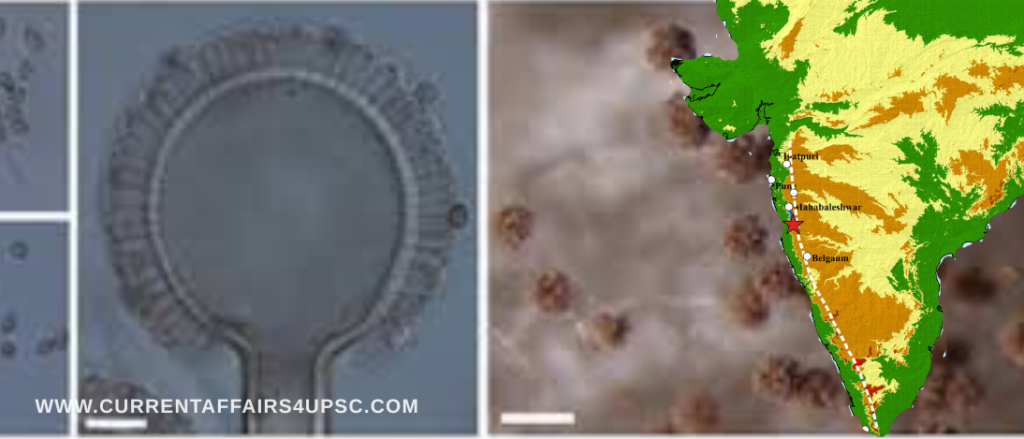
Researchers from the MACS-Agharkar Research Institute in Pune, an autonomous institute of the Department of Science & Technology, Government of India, have identified two novel species of Aspergillus section Nigri (commonly known as black aspergillus), Aspergillus dhakephalkarii and Aspergillus patriciawiltshireae, and reported the first geographic record of two black aspergilli A. aculeatinus and A. brunneoviolaceus, from soil samples collected from the Western Ghats.
The findings underscore the critical need for continued exploration and conservation of this ecologically sensitive hotspot, which holds immense scientific, ecological, and biotechnological significance.
Key Points:
The genus Aspergillus comprises a diverse group of filamentous fungi that are ubiquitously distributed across various ecological niches and are of considerable medical, industrial, and ecological significance. Although numerous Aspergillus species have been documented from the Western Ghats, reports specifically focusing on members of Aspergillus section Nigri remain limited, underscoring the need for further systematic exploration and taxonomic investigation using modern techniques within this section in the region.
International experts in the systematics of the family Aspergillaceae established stringent gold standard protocols; the integrative or polyphasic taxonomic approach for the authentication of the species in Aspergillus. Adopting these polyphasic taxonomic approach, the research team combined detailed morphological characterization with molecular phylogenetic analyses, using ITS and CaM (genes for identification), BenA and RPB2 (genes for phylogeny). The multi-gene phylogenetic analysis was inferred through maximum likelihood analyses (with high statistical support) and the distinct lineages of the two new species were identified.
Black Aspergilli are known as workhorses of industrial application especially, in citric acid production, food mycology, fermentation technology, and agriculture. The inventory is also a part of a research thesis addressing the phosphate solubilisation potential of Aspergillus section Nigri from India. A. dhakephalkarii is characterized by rapid colony growth, producing pale to dark brown conidia and yellowish-white to yellowish-orange sclerotia. Its uniseriate conidiophores branch into two to three columns, and it has smooth-walled, ellipsoidal conidia, distinguishing it from related species that typically have spherical, echinulate conidia.
- A. patriciawiltshireae also exhibits fast-growing colonies with abundant sclerotia on Czapek Yeast Autolysate Agar (CYA) and Malt Extract Agar (MEA), though it shows modest sporulation. Acid production is present in CREA and produces yellowish-orange sclerotia on CYA, MEA, and OA. It features echinulate conidia and uniseriate conidiophores that branch into more than five columns.
- Phylogenetic analyses place A. dhakephalkarii as a sister species to A. saccharolyticus, while A. patriciawiltshireae is closely related to A. indologenus, A. japonicus, and A. uvarum in series Japonici. Additionally, the study reports the first records of A. aculeatinus and A. brunneoviolaceus in India.
What are the significance of the findings?
The discoveries have several important implications:
- Highlighting biodiversity The findings underscore the immense, and largely untapped, fungal diversity found within the Western Ghats, a UNESCO World Heritage site and a recognized biodiversity hotspot.
- Advancing mycological research This is the first Indian-led study to identify new species within Aspergillus section Nigri using advanced integrative taxonomy methods, boosting India’s contributions to fungal research.
- Potential industrial and ecological applications Black aspergilli are known for their use in citric acid production, food fermentation, and agriculture. The newly discovered species may hold biotechnological potential, such as the ability to solubilize phosphate, which is a focus of the ongoing research.
Author: currentaffairs4upsc
UPSC


